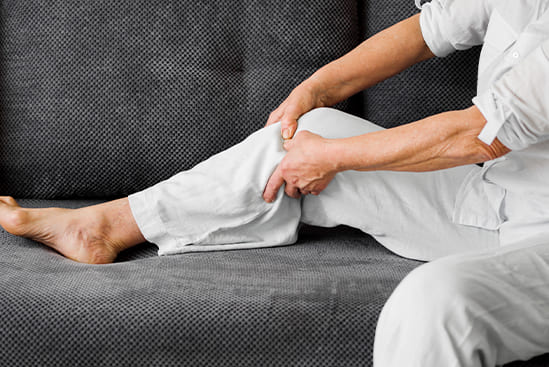admin
September 30, 2024

Synapse Physiotherapy
Physical Therapy: Who Needs It & How It Helps?
Physical therapy (PT) is a branch of rehabilitative health that uses specialised exercises and equipment to help individuals regain or improve their physical abilities. It is not limited to those recovering from an injury, as it also aids in managing chronic health conditions, improving mobility, and enhancing overall well-being.
If you are looking for physiotherapy in Cyberjaya, our Synapse Physiotherapy branch in Cyberjaya is perfect for those who live in the area. Let our expert physiotherapists assess your condition and come up with a specialized treatment plan of care for any concerns you might have.
According to the American Physical Therapy Association (APTA), physiotherapists are trained and are licensed movement experts. They can diagnose and treat a range of injuries, disabilities, and health conditions. Physiotherapists also aim to improve a person’s range of movement and quality of life and prevent further injury or disability.
Licensed physical therapists work in a range of healthcare settings which includes outpatient offices, private practices, hospitals, rehabilitation centers, nursing homes, home health, sports and fitness settings, schools, hospices, occupational settings, government agencies and research centers.
Doctors often recommend physiotherapy for patients who have chronic pain, gone through surgery, or sustained any sports related injury. You can also seek physiotherapy yourself without a doctor’s referral. According to the World Confederation for Physical Therapy, a physiotherapist receives training that enables them to:
- Conduct a physical exam and evaluation of a person’s movement, flexibility, muscle and joint motion, and performance including the person’s health history.
- Give a clinical diagnosis, prognosis, and plan of care with short and long term goals.
- Perform physiotherapy treatment and intervention.
- Give self-management recommendations, including exercises a person can do at home.
But who exactly needs physical therapy, and how does it help? Let’s dive in.
Who Needs Physical Therapy?
Physical therapy can benefit a wide range of people, from children to older adults. Here are some of the common conditions and situations where physical therapy is recommended:
- Injury Recovery:
After an injury—whether it’s from a sports-related accident, a fall, or a car crash—PT is crucial for rehabilitation. It helps restore function, prevent further injury, and manage pain. Common injuries treated include sprains, fractures, and ligament tears. - Post-Surgery Rehabilitation:
After surgery, especially orthopedic procedures like joint replacements or spinal surgeries, patients often need to regain strength and flexibility. PT helps ensure that post-operative recovery is successful and reduces the risk of complications like stiffness or muscle weakness. - Chronic Pain Management:
People suffering from chronic pain conditions, such as arthritis, fibromyalgia, or back pain, can benefit from physical therapy. PT can help alleviate pain through targeted exercises, posture correction, and manual therapy, minimizing the reliance on pain medications. - Mobility Issues:
Conditions like Parkinson’s disease, multiple sclerosis (MS), or even aging-related issues like balance and coordination problems can reduce mobility. Physical therapists design programs to improve movement and reduce the risk of falls. - Neurological Disorders:
Patients with conditions like stroke, spinal cord injuries, or traumatic brain injuries often need physical therapy to relearn motor functions, regain strength, and increase independence in daily tasks. - Pediatric Conditions:
Children with developmental delays, cerebral palsy, or other congenital conditions often need physical therapy to improve motor skills and enhance their ability to perform daily activities. - Women’s Health Issues:
Physical therapy can address issues like postpartum recovery, pelvic pain, or urinary incontinence in women. Specialized techniques help improve pelvic floor strength and overall well-being.
How Physical Therapy Helps
- Pain Management:
One of the primary goals of physical therapy is to reduce pain. Therapists use techniques such as manual therapy, electrical stimulation, ultrasound, and hot/cold packs to alleviate discomfort. Customized exercise plans further support healing by strengthening the muscles and joints, improving flexibility, and promoting circulation. - Restoring Mobility and Function:
Whether due to injury, surgery, or a chronic condition, losing mobility can be debilitating. Physical therapy focuses on restoring movement by improving flexibility, strength, and range of motion. This is especially helpful for patients with joint problems, those recovering from surgery, or those dealing with neurological issues. - Preventing Further Injuries:
A well-structured PT program helps individuals improve their overall body mechanics and posture, reducing the risk of future injuries. For example, athletes use physical therapy to correct imbalances or weaknesses, ensuring they return to their sport stronger and less prone to re-injury. - Avoiding Surgery or Long-Term Medication:
In some cases, physical therapy can be an effective alternative to surgery. By addressing the root causes of pain or mobility issues, patients may be able to avoid more invasive treatments. Additionally, PT can help reduce dependence on pain medications, especially opioids, which have a high risk of addiction. - Improving Balance and Preventing Falls:
For older adults or those with neurological conditions, balance and coordination exercises are key components of physical therapy. Therapists use specific training techniques to improve stability, reducing the risk of falls and related injuries. - Personalized Treatment Plans:
Every patient has unique needs, and physical therapy tailors its treatment plans accordingly. After an initial assessment, therapists design individualized programs that take into account the patient’s goals, condition, and progress. This personalized approach ensures more effective and targeted results. - Support for Chronic Conditions:
For people with chronic conditions like diabetes, cardiovascular disease, or respiratory issues, physical therapy offers a way to manage symptoms and maintain a higher quality of life. Exercise programs can improve circulation, respiratory function, and overall strength, allowing patients to remain more active and independent.
Conclusion
Physical therapy is more than just a response to injury; it’s a proactive approach to improving and maintaining physical health. Whether recovering from surgery, managing a chronic condition, or simply aiming to prevent future injuries, PT offers a comprehensive and personalized route to rehabilitation and wellness. Through its focus on restoring movement, reducing pain, and enhancing function, physical therapy helps individuals lead fuller, more active lives. Contact us now!
Tags :

Back & Neck Pain
Conditions such as stiffness, postural abnormalities and muscle overuse from prolonged desk work at the office or home is more prevalent than most would think. We provide the necessary tools to fix you up and educate you on ergonomics which can unload unnecessary stress.
- Spine & Core Rehabilitation
- Strength & Conditioning Programme
- Pain Management
- Biomechanical Assessment
- Sports Physiotherapy
- Group Class

Sports Injuries
Rolled ankles, jarred knees, impinged shoulders are few conditions in the plethora of sports injuries which can hamper performance and limit our enjoyment of sports. Physiotherapy not only treats the symptoms of these conditions but propels your overall fitness to greater heights.
- Strength & Conditioning Programme
- Pain Management
- Biomechanical Assessment
- Sports Physiotherapy
- Shockwave Therapy
- Group Class

Work Desk Injuries
Conditions such as stiffness, postural abnormalities and muscle overuse from prolonged desk work at the office or home is more prevalent than most would think. We provide the necessary tools to fix you up and educate you on ergonomics which can unload unnecessary stress.

Pre-Post-Surgical Conditions
Surgery involves going through preparation both before and after. Physiotherapists play a vital role in getting your body ready for surgeries with circulatory, breathing and strengthening exercises. After the procedure, let us be there for your recovery and rehabilitation, taking it one step at a time.

Scoliosis & Postural Abnormalities
The way we stand, sit, walk and sleep has influence over our posture and the overall balance of muscles controlling its alignment. A comprehensive screening can be done by our physiotherapists to detect abnormalities, which we will aid in correcting.

Neurological Conditions
Neurological disabilities such as stroke, nerve compression and neuropathies can be barriers for patients to live life to its fullest. We at Synapse are committed to help you overcome these hurdles by ensuring functional mobility and quality of life is at its optimum by providing the right treatment and exercises.

Osteoarthritis & Rheumatism
Joint degeneration and inflammation happens as the human body grows older, but that does not mean our way of life degenerates as well. Relief your joint pains with a joint effort together with your physiotherapist, who will provide pain-relief treatments and prescribe exercises for your wellbeing.

Conditions Relating To Elderly
Common conditions in the older age population include hips & knee pain, back & neck pain, osteoarthritis, rheumatism, fear of falling and many more. Aging and degeneration of bodily function is inevitable, but here at Synapse, we will help you live the best of your life.

Home Physiotherapy
We understand that some conditions or injuries can make it difficult to receive rehabilitation at our clinic be it mobility or transportation issues. Our objective is to provide you with the same high-quality physiotherapy services at home that you would receive in-clinic.
